Underground Comix Artist Gilbert Shelton
Gilbert Shelton's contribution to Underground Comix helped establish him as a founding father of the counter culture movement.
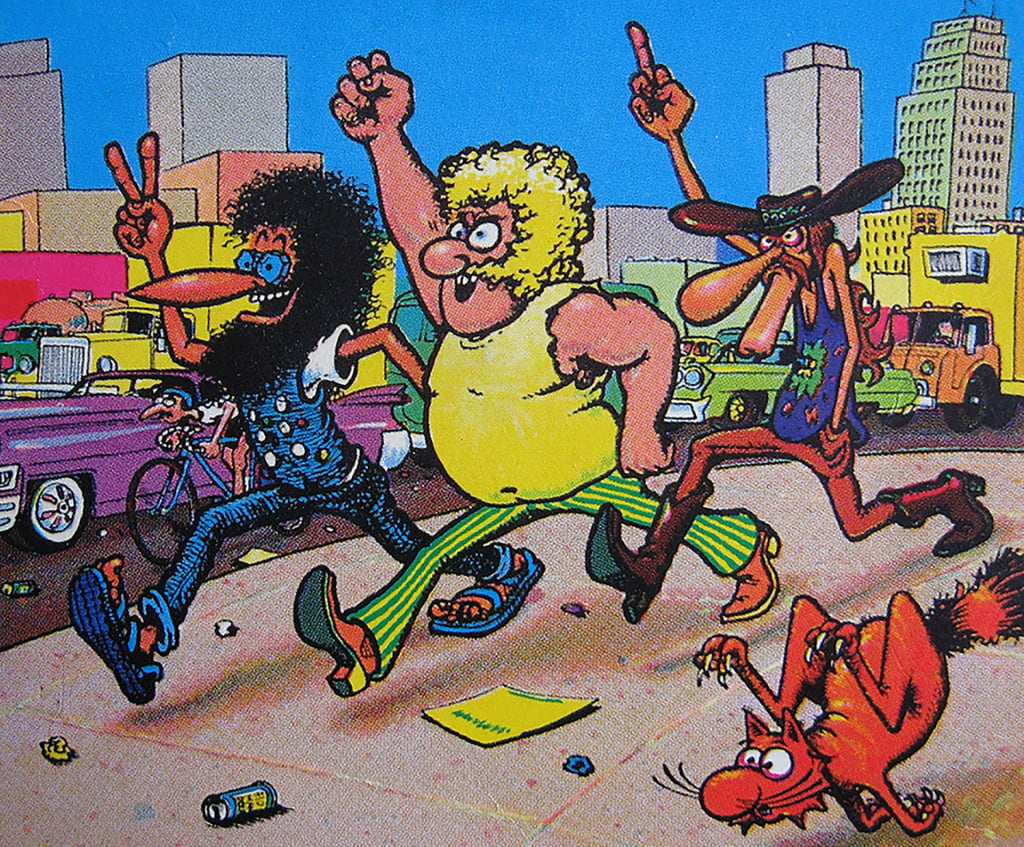
Underground comix was a counter culture art form with a large cult following. Like a hall of mirrors, they distorted and exaggerated reality, turning the sublime into the ridiculous, the serious into absurdity, tickling the rib and poking an outrageous finger at social convention and humbug. The golden age of underground comix spawned artists like Gilbert Shelton and Robert Crumb, among others, with their unique and anarchic talents. Gilbert Shelton was the creator of Those Fabulous Furry Freak Brothers, a regular in comix. His perceptions of the 1960's and the future of counter culture movements, in his own words is both enlightening and fortuitous.
In His Own Words
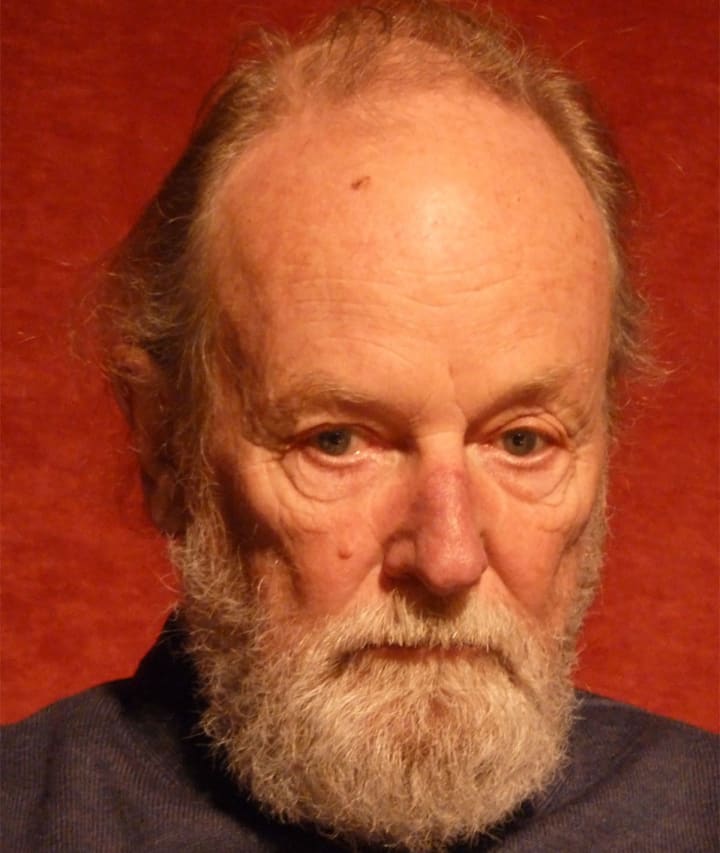
I first smoked marijuana in Mexico, in 1959, while I was going to the University of Texas. On weekends we'd drive down to Mexico, it's only 200 miles. It was just another form of entertainment. I remember we were so paranoid at first. On the rare occasion when anyone would have marijuana to smoke we would all go into the bathroom and shut the door and put a towel under the crack in the door so that the smoke wouldn't escape and get out of the house and go down to the police station four miles away and cause the police to come and arrest us all. The laws have been changed since then, of course, in those days though, you could get life imprisonment for possession of marijuana, if it was your third rap.
At the University of Texas, the Students' Association actually published a humor magazine which they paid the editor to edit, and in fact that was my education. I attended classes and got a degree, but actually my chief interest was working on the humor magazine. It was not a credit course, it was just for fun. The magazine was called The Texas Ranger. We would exchange magazines with other colleges, so the jokes and cartoons were published in more than one magazine. I did some Wonder Warthog comics, thats when I started it. There was a board of censors that had to approve of everything that went into the magazine. If the college magazines kind of mentioned weed, it would have to be a secret reference to get by the board of censors, who of course didn't know anything about marijuana. I remember it was quite a game trying to sneak things by the censors. In fact one entire editorial staff got fired all at once because they sneaked the word "fuck' by the censors by hiding it in an illustration, and after the magazine was printed and distributed to all the students, then the discovery was made. The dreaded word was printed in the magazine, so they were all dismissed.
Donald Duck

When I was in the eighth grade, I presented a play at school that I adapted from a Donald Duck comic book, and memorized all the lines and had actors with duck costumes and beaks playing all the parts. That forced me to analyse that comic strip very closely. It was one written by Carl Barks, and it had Donald Duck, and it also had Donald's cousin, Gladstone Gander, the duck with the best luck in the world. We turned this into a fifteen minute play. I was twelve years old at the time. After that I understood how to draw a comic strip because I had turned a comic strip into a play. I think it pointed out to me that what the comic strip could do I could not do live, and made me appreciate it. One of the things was to have an earthquake, that was part of the play. We simulated an earthquake by tossing the furniture around, that was the fun part of the play. We were in eighth grade, not stoned.
When Drawing, Marijuana Helps
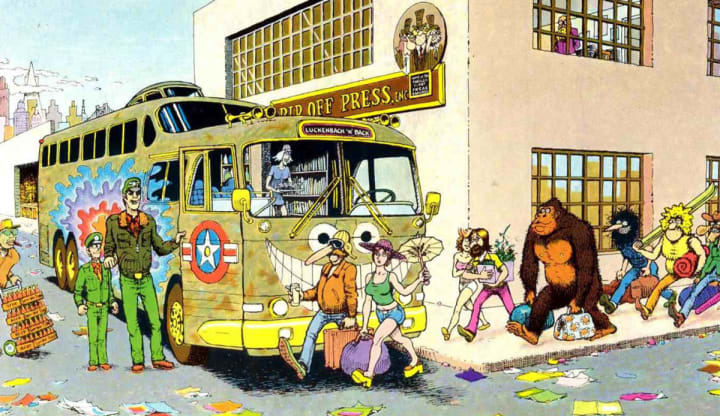
I always drew, I can't remember not drawing. I would copy comic strips out of the paper and draw things in my notebooks when I was supposed to be doing my homework, that sort of thing. When drawing, marijuana helps a little bit because mainly it enabled me to sit still a little longer. It doesn't seem to act on that part of the brain that produces drawings, but it does produce patience, and concentration is the result. It takes hours and hours, a long time for me to finish a drawing. I'll put black ink down for awhile and then I'll cover up mistakes and changes with white paint, and then I'll go back and forth, back and forth with black ink and white paint. Maybe a real artist is somebody that can do it effortlessly, although that's the technique, I think. I don't think a good technique is necessary to make a good comic strip. It's the words and the story that are more important than the technique.
Terry Gilliam of Monty Python Fame

When I left college I didn't know what I was going to do. I went and looked up Harvey Kurtzman in New York City and he was very helpful. He printed my comic strips and paid me money. I was paid for the Texas Ranger job, that was a hundred dollars a month, enough to live on when I was a student. I earned as much later when I was working for Help magazine. They didn't publish as often. In fact Help finally went out of business forever in 1965. In New York I moved around a lot, you live off of other people, basically. One time in New York I lived in someone else's apartment in the living room on the sofa for three or four months. That was Terry Gilliam of Monty Python fame. He was the assistant editor of Help magazine. He’d a humor magazine at his college too in Los Angeles, The Occidental College Fang.
Wonder Warthog
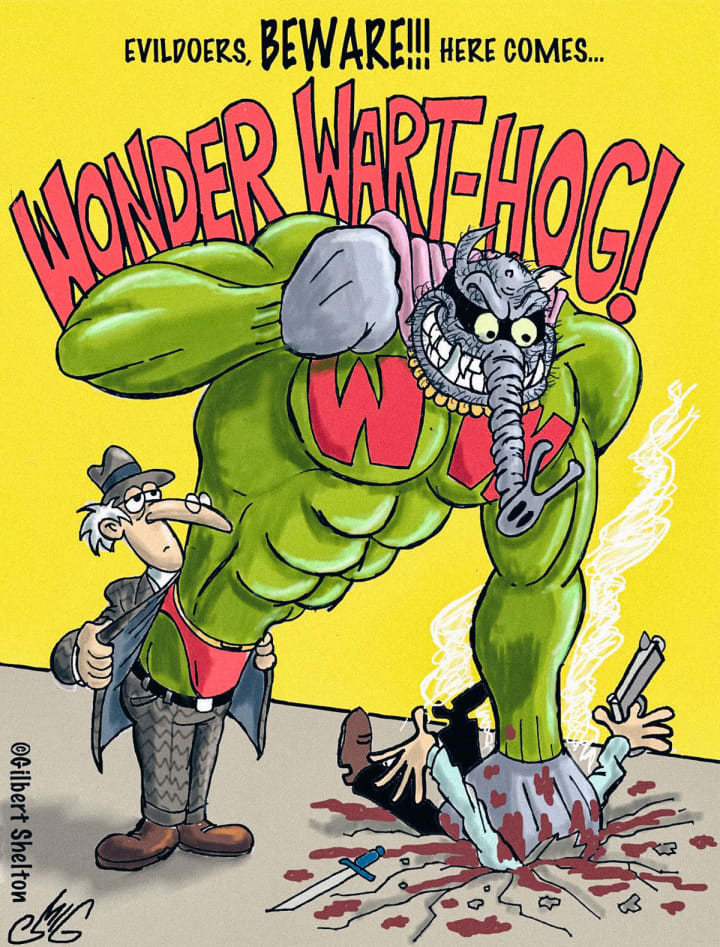
In 1965 I went to California for the first time. At that time I went to Los Angeles, where I established to do the Wonder Warthog comics for Drag Cartoons. Then I moved back to Texas for two years, doing the Warthog comics and mailing them to Los Angeles. Finally that publisher went out of business in 1967, after publishing two issues of Wonder Warthog Quarterly. A sixty-four page comic book. That's what bankrupted him. Drag Cartoons had a tremendous circulation, I think it was around two hundred thousand a month. They were very automotive oriented, most of it was done by the publisher himself, Pete Millar who is a cartoonist. I have an interest in cars and hot-rods that comes from growing up in Texas. I came to hate automobiles after I came to live in California for awhile.
Ballrooms
Back in Texas in 1967, I and two of my friends, who happened to be working on Wonder Warthog Quarterly with me, opened up a headshop in Austin, Texas. It was the first one in all of Texas. It was right across the street from the State Capitol building. It was first called Underground City Hall and then the name was changed to Oat Willies Campaign Headquarters. I left soon after the store opened. I couldn't stand the pressures of actually working in a headshop, even under the most favorable conditions in Texas. We put our earnings from Wonder Warthog Quarterly into that store, a check for a thousand dollars. We waited for months and months for that check.
I suppose we were trying to imitate the Californian scene like everybody else was. We opened up a rock and roll dance hall, a big old dilapidated building that had been a department store. We had remodeled and turned it into a concert hall, of sorts. I was the sign-painter. I painted a big sign for the outside front that said Vulcan Gas Company. Then I did a series of posters, each week we'd print up some nice posters, and put them up in various store windows all over town, on the model of the Avalon Ballroom and Fillmore West in San Francisco, who were having some really beautiful posters done by Victor Moscoso, Rick Griffin and Wes Wilson. Throughout ‘67 and '68 I was doing that. When I moved to California in '68, I seem to recall I was going to be a poster artist myself
Rip Off Press

The Avalon Ballroom lost its license to have concerts because of too much noise. I'd been doing posters for the Avalon Ballroom and invested in a printing press, we were printing the posters as well. When they quit giving the concerts, that's how the Rip Off Press got started. We were going to print rock and roll posters, however the reality of economics made us be in the comic book business. Besides me, there was the cartoonist Jack Jaxon and the guy who ran the printing press whose name was Dave Moriarty.
In early '68, back in Texas, I did a little ten-minute movie in black and White in 16mm called The Freak Brothers March on Capitol. Anyway, the only copy of that movie was lost. I did a comic strip to advertise the movie. In the comic strip the three Freak Brothers, Phineas, Fat Freddy and Freewheelin Franklin appear for the first time. It appeared on a single sheet of paper as a handbill. Now it's part of the Freak Brothers comic book, number one. It's the story about the giant magic marijuana seed, like Jack and the Beanstalk. People seemed to like the comic strip so much that I forgot about the movie and just kept doing the comic strips. I did it for magazines and comics. They were traded and exchanged around the underground press.
Fat Freddy's Cat
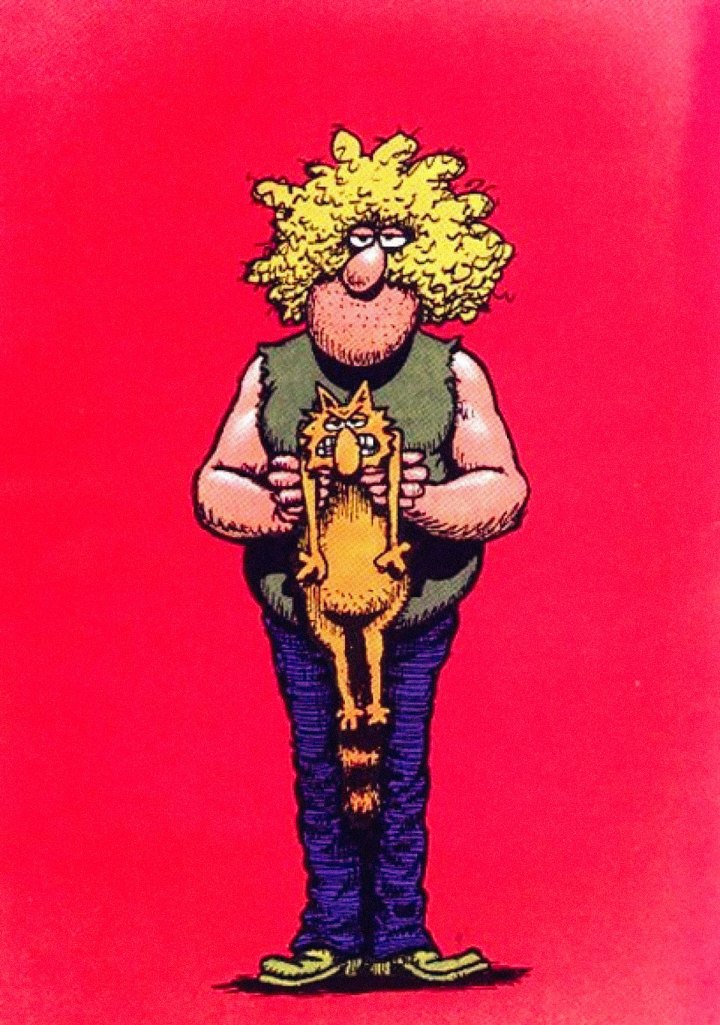
Fat Freddy's Cat first appeared when the Freak Brothers were in a weekly feature in the Los Angeles Free Press in 1970. It used to be on the back page every week with the Freak Brothers being most of the page and Fat Freddy's Cat would be a small strip down at the bottom. Which is like the old-fashioned, traditional form that the comics were in the American newspapers on Sunday. There would be a large strip and a related smaller strip. That Krazy Kat started as a small strip underneath a larger one. It was the cat that lived underneath the house that was occupied by the family. Later Krazy Kat became more important than the original large comic strip, taking up the whole page, and the original One was forgotten. I've been around cats a lot. Cats just get along better with stoned people. It certainly doesn't bother the cat if human beings just sit there and don't move, that's fine with the cat. Actually it was someone here in London who first published a separate edition of only the cat strips, a small edition but it sold fairly well. So we published our version of the same thing in San Francisco, from Rip Off Press.
Robert Crumb's Zap Comix

I first became aware of Robert Crumb's cartoons in Help magazine. The first thing of Crumb's that I remember seeing was Robert Crumb Visits Harlem, it's kind of a spoof on a series that was in Playboy, called Shel Silverstein visits here and there. Robert Crumb's visit to Harlem wasn't funny like Silverstein's series, but instead it was a cartoony drawing of reality with all the real graffiti on the walls and everything. It was really fantastic and original stuff at the time.
Robert Crumb and his friends in San Francisco, did Zap Comix, that kind of started that side of the movement. There's a publisher in Berkeley called the Print Mint, it was doing first a comic newspaper, then a book called Yellow Dog. Then Rip Off Press started doing comix, and a third one called Last Gasp. Those three publishers started in the la te sixties or early se venties. The word “comix” was probably Robert Crumb's doing with Zap Comix. For the lack of a better term, that's what it is, comix with an ''x'', or underground comix, but they're not, and never have been really underground.
When I See it in Russian
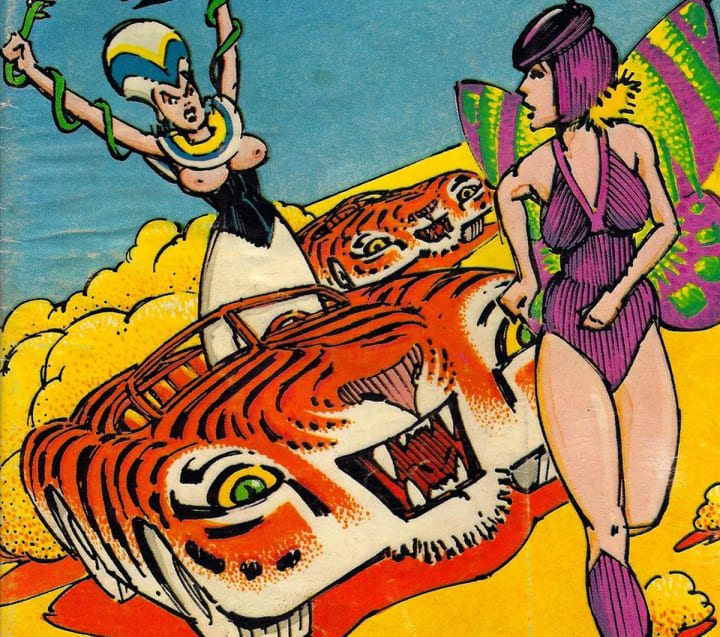
The Fabulous Furry Freak Brothers, Number One, was printed by Rip Off Press in 1970. We printed eight or nine hundred thousand, I should think. We keep reprinting them. I think the first print-run was 20,000. It's the famous Rip Off Press distribution system that uses the trickle technique, that is it keeps selling over a long period of time at a slow rate. That's how Rip Off Press got started, by groping around in the darkness, with the mailing list left over from the rock and roll poster business, that is the list of head shops and record stores that sold rock and roll posters. I never had any capital, except the original 250 dollars it took to buy the printing press. I quickly refused to have anything to do with the printing press as it was too dirty to be a printer and an artist in the same lifetime.
I can't explain why the underground comix movement came to be centered in San Francisco, except that Robert Crumb lived there for a while and started Zap Comix, which was the model for most of the succeeding comix. Rip Off Press just grew organically, kind of around the Freak Brothers comix. Being self-sufficient and independent was one of the most appealing things about the hippie ethic. There's been a number of European translations of the Freak Brothers. I think Italy was the first country to translate the Freak Brothers back in '73, then France was next, then the English Fat Freddy's Cat book was done, and since then there has been various other translations, German, Danish, ten or twelve altogether. I've seen it in Finnish, Norwegian, but when I see it in Russian then I'll know it really translates.
About the Creator
Frank White
New Yorker in his forties. His counsel is sought by many, offered to few. Traveled the world in search of answers, but found more questions.


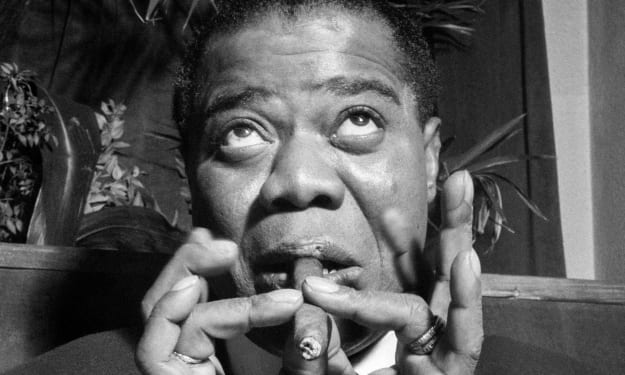



Comments
There are no comments for this story
Be the first to respond and start the conversation.